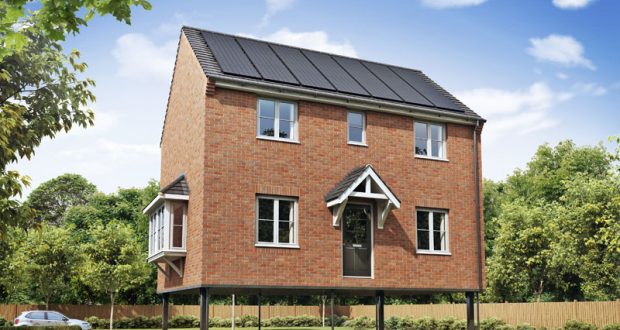Unanimous councillor support was given to a proposal to trial a “unique” house capable of being lifted on stilts during flooding.
Members of South Holland’s planning committee agreed a prototype house could be build in Austendyke Road, Weston Hills, with the caveat that it was important to prevent it becoming a tourist attraction.
Committee chairman Roger Gambba-Jones said: “When this house is operating it needs to be done on a need to know basis.
“The worst case scenario is that it becomes widely known and turns into a visitor destination.
“What local people do not need is the sort of thing you see when people festoon their houses with Christmas lights and you see a continuous line of cars trailing through to view and park up and take photographs.”
A condition of the permission, which allows the house to be in place for a five-year temporary period, is that opening hours for visitors to the site will be restricted to between 9am and 5pm Monday to Friday.
Coun Gambba-Jones said: “It’s very much by invitation and will not be broadcast around for the wider community to ensure we do not get a large gathering of people standing there waiting baited breath for this thing to rise out of the ground.”
Coun Andrew Woolf was one of many to speak in support of the proposal at the meeting on Wednesday last week.
He said: “I would describe this as a unique development and we are fortunate to have this in South Holland. I think it’s a very good idea and one that should be tested.”
Larkfleet Homes intends to use the prototype house to prove the design is fit to be rolled out widely.
A report before councillors said: “The theory behind the project is that because the house will be of modular steel-frame design it can then be disassembled and re-erected on another site on conventional foundations as a family residence.
“It is anticipated that houses of this design would be jacked up well ahead of the arrival of flood waters, based on advance warnings from organisations, such as the Environment Agency.
“The mechanical jacking system is designed to lift the 65 tonne house to the full 1.5 metre height above ground in less than five minutes.”
Rooftop solar panels and a battery would provide the house with continuing electricity supply, but occupiers would not remain in it during floods.
The report said: “Instead, the householders would pack up, lock up and jack up the home before taking refuge in temporary accommodation on higher ground elsewhere.”
 The Voice of Spalding and South Holland
The Voice of Spalding and South Holland



